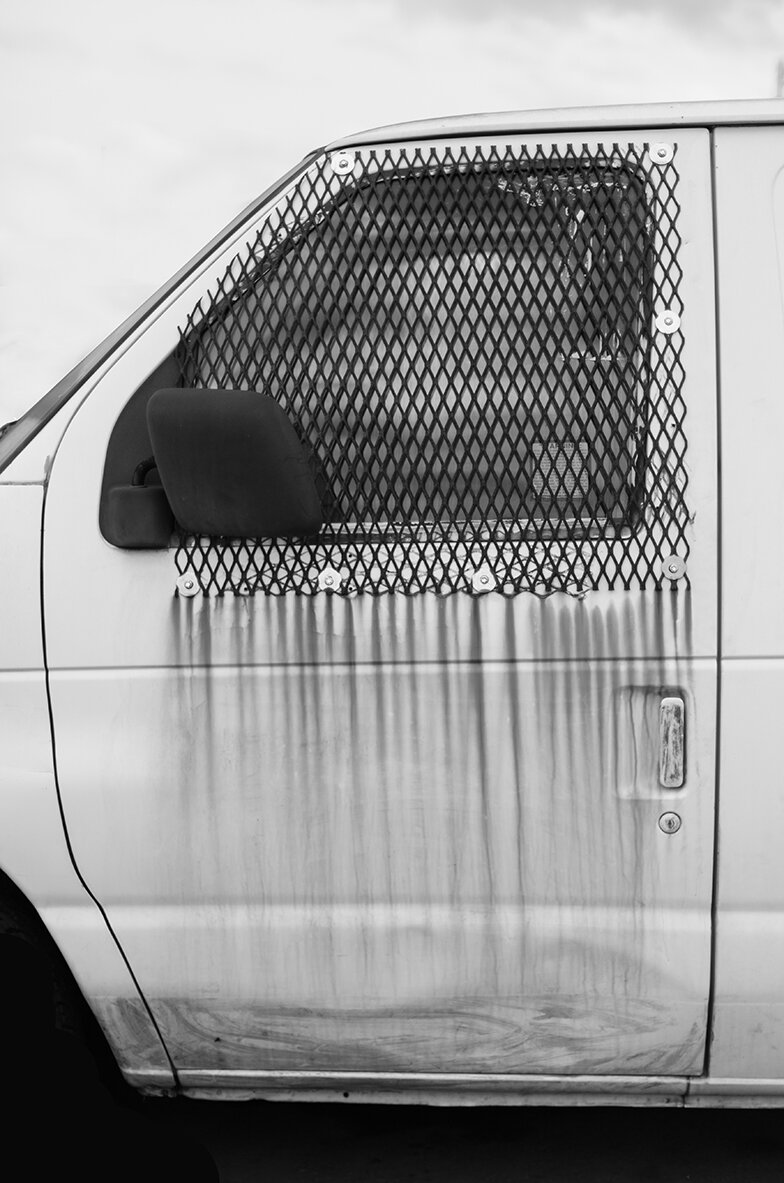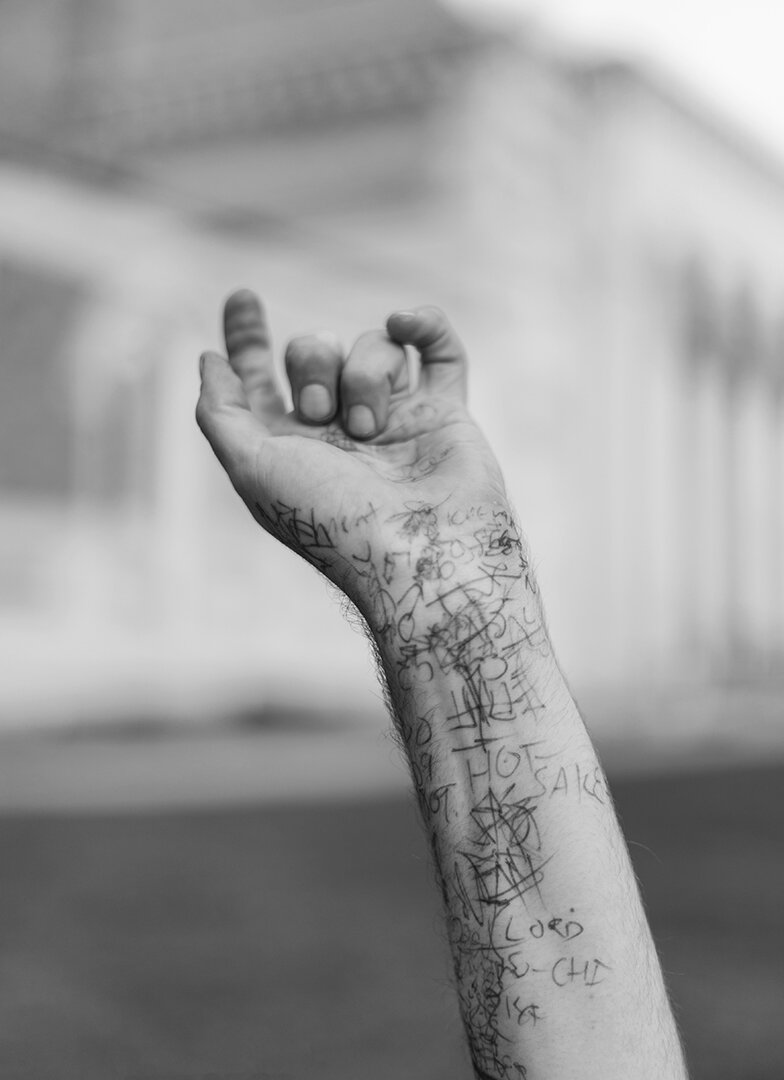DARK TREES: Drew Sangria
PC: Drew Sangria
Andrew D. McClees (ADM): For those not familiar with you or your work, can you introduce yourself and briefly describe your work?
Drew Sangria (DS): I consider myself an emerging photographer most interested in exploring the medium as a way to fulfill a need to be creative as an artist. I use photography as an excuse to get out into the world. All of my work is within the realm of documentary with an emphasis on creating a subjective vision of the world around me.
ADM: What's the concept behind Dark Trees?
DS: In Dark Trees I wanted to work around some of the more ambiguous photos I have taken within the past year. I like pictures that are not easily read that challenge the viewer. Work that is wrapped up too neatly with a specific concept does not generally interest me. With this book I wanted to create some sort of broken narrative that has the ability to bring multiple interpretations based on the viewer. The images in the book act as metaphors that create connections and parallels throughout. Even though my photographs are unstaged and real, I wanted to create some sort of fictional mystery world in Dark Trees. Some of the themes explored in the book include class, despair, longing and greed.
ADM: That definitely reads clearly - were there any images or moments that the central (enigmatic) narrative clicked into place for you?
PC: Drew Sangria
DS: The narrative is still a mystery to me, being far from straightforward I don't even fully understand it, I think it is impossible and not really meant to be completely understood. Ten different viewers might have ten different interpretations. I feel like the challenge of trying to make some kind of sense of it all is one of the pleasures of looking at art. I cant really say that there was a single image that made things click. I think that the themes intertwined in the work were subconsciously in my head before I even took a lot of the photos.
ADM: You're based out of Sacramento, correct? How did you find that that shaped the work you made, and continue to make?
DS: Yes. Within the past years there has been a lot of growth and wealth flooding the city yet meanwhile the homeless/transient issue has increased considerably. With the introduction of prop 47 in California, theft and drug use has also skyrocketed. I tend to gravitate to the the underbelly of the city so I guess the current state of things has made it more interesting for me. I feel like the city of Sacramento and also outlying areas of the county offer a plethora of subject matter for me to work with.
ADM: What was the image selection and shooting process like for Dark Trees?
DS: My shooting process is intuitive, most of the time I don't even know why I am attracted to taking certain pictures. I shoot first and ask questions later, and am a firm believer in learning by doing. When I go out I'm not really looking for anything specific, I like to keep my eyes open to everything around me instead of restricting my perception of the world.
As for image selection, that's where I feel the artistic part of it all comes into play. I believe the editing and sequencing of photos is just as or even more important than the act of taking photos. I started with a bunch of photos then made cuts and eventually ended up with 23 that I felt worked well together. The book is mixture of diptychs and also images that stand alone. For the overall sequence I took it one page at a time to establish some sort of flow based on my personal vision of the work.
PC: Drew Sangria
ADM: Fascinating - what's your shooting process or routine like (are you a dedicated shoot-day shooter, or do you fit your photography into your daily life)? You mention shooting first, then considering the images later, but what gets you out shooting?
DS: I have to fit shooting into my daily life, I don't have the luxury of being able to just take photographs whenever I want to. I have a job and two small children that I attend to during the week. I usually get one dedicated day on the weekends to go out and shoot. I do bring my camera with me wherever I go during the week just in case I happen to stumble across something interesting.
As an artist I struggle with self doubt quite a bit and a lot of times I don't even feel like going out to shoot. I have learned to fight those feelings and just get out and shoot regardless of how I may feel at the moment. To me taking a good photo is like taking a drug, a hit of excitement, a fix that keeps me going, I guess you could say the act of shooting is what keeps me shooting in a sense.
PC: Drew Sangria
ADM: What was the impetus for Dark Trees, or what made you decide to put it together?
DS: To be honest with you, I had a voucher from this book printing company Blurb.com for $80 and it was about to expire. I had also been wanting to put something together for quite a while before this. Since time was of the essence, I only spent a few days pulling images together for Dark Trees. I generally like to spend more time sequencing images, but in a sense it was refreshing to work within a strict time constraint and not overthink the whole process.
ADM: I respect the self-taught, learn by doing mentality - what would you say your biggest influences were for dark trees, photographic or otherwise?
DS: A few of the many photographers that have been an inspiration to me include, William Eggleston, and Gregory Halpern. I love Eggleston's ability to pull darkness from the ordinary and banal. Not everyone gets his work, but it has really resonated with me. I am obsessed with Gregory Halpern's work, mainly his projects "A" and "ZZYZX". I discover something new every time I pick up one of his books no matter how many times I have looked at them.
ADM: What's next? Do you have more plans to do (or are you working on) more zines or a book?
PC: Drew Sangria
DS: I plan to continue shooting and building an archive of photos that I can someday incorporate into more books and zines. I also have an ongoing series on my website entitled "Survival" that I would like to turn into a full book eventually.
ADM: What advice would you give someone on intuiting a narrative for their photos, or assembling one - mysterious/broken or not?
DS: Let your work tell you what the narrative should be. Make a bunch of small prints of your photographs and lay them out on a table and spend some time experimenting with sequencing and pairing. This will aid in making connections within your work and help crystallize a narrative. Also, knowing who and what came before you can be helpful, study other photo books to see how they have been put together.
ADM: Do you have any parting words? also where can people view your work, and pick up a copy of Dark Trees?
DS: Create art for yourself, not anyone else. I have more work up on my website drewsangria.com. Dark trees is available to purchase here.
Hi! If you’ve reached this far in the article, we really appreciate your readership! if you’ve enjoyed this - please consider throwing us a donation, or subscribing to our patreon to help keep the website going!








